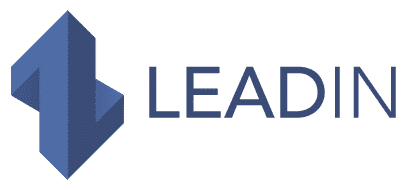Follow-up emails are a good way to reach more prospects in B2B prospecting.
We know that the response rate for prospecting emails decreases from email to email. Indeed, a Yesware study reports 30% in the first email, 21% in the second, 18% in the third, etc. However, the response rate for the 10th email remains at 7%. So why not go that far?
Let’s be clear: it’s not about spamming your prospects, but follow-up emails are a real asset for prospecting. It is still necessary to know how to write them correctly so that they are open.
In this article, we explain how to write a good reminder email for B2B prospecting , and 5 examples to use for your prospecting campaigns.
The basic principles for chasing a prospect by email
Emails are such a powerful prospecting tool that everyone uses and abuses them. So it’s a good bet that your emails will attract to an inbox that contains other prospecting messages .
So, the key to having a chance of being opened is to stand out from the competition .
Here are some rules for writing relevant follow-up emails:
Awaken curiosity
The first technique to achieve this is to make the recipient feel unique .
For this you can:
Write a short text (with only 2 or 3 sentences)
Optionally add a custom image (possible with LeadIn )
You can start by recalling the context of your solicitation and then end with a clear, engaging and relevant call to action (CTA).
Work the object
A study by Shane Snow (co-founder of Contently) and Jon Youshaei (founder of EveryVowel) showed that small objects got more responses than large ones.
They tested 2 different subject lines and 66.7% of responses came from email with a short subject line.
This is all the more important today when we know that more than half of emails are opened on mobile .
Personalize your email
Nobody likes receiving impersonal messages sent to dozens of recipients.
Personalizing your follow-up emails is a good way to boost your response rates. One of the ways to achieve this is to opt for the automatic personalization of your emails thanks to your database.
It’s just a matter of including variables like:
[Prénom]
[Email]
[Fonction]
[Société]
And many others !
Stagger the sending of follow-up emails over time
Timing is the sinews of war when it comes to emailing . Between the concern not to invade the prospect too much and that of not being forgotten , it is necessary to find the right balance.
At LeadIn, we regularly create multi-channel prospecting campaigns for our clients.
We space reminder emails by 2 to 3 days most of the time.
Find our best sequences here .
How to structure your follow-up emails?
Before even writing your follow-up email, you must first clearly identify your objectives :
Schedule an appointment
To sell
Get prospect information
Etc.
You can have multiple goals in a single campaign, but we recommend keeping only one per email, with a CTA .
Otherwise, you risk diluting the reader’s attention. However, it is precious so do not waste it!
Also, it is quite possible that your objectives are not the same from email to email. The main thing is that they are very clear when writing your email.
To hit the mark, your follow-up email must respect a certain structure:
1. A personalized politeness formula
For example with the first name of the recipient.
2. A hook
For example: “I hope you are well…”
3. A reminder of the context
Remind the prospect of the content of your last email or your last interaction with them.
Examples:
I am coming back to you following our interview on [date]
I wanted to get back to you regarding my email dated … on …
I come back to you to ask your opinion on[sujet du dernier email] )
4. The reason for the raise
In a precise and concise manner, you must explain to the recipient of your email why you are resending it.
Examples:
I think that[Nom du produit] could help you[Missions du prospect] more efficiently
I suggest you discuss it to check if I am wrong or not.
I think that[Nom de votre produit] would help you [Missions du prospect]
I therefore suggest that you try it for free for a month to convince yourself of its usefulness for your business.
I think that[Nom du produit] could make a big difference in [Mission du prospect]
I suggest that you discuss in person your current needs so that I can show you concretely how[Nom du produit] can help you solve your problems
5. A CTA (call to action)
You must encourage the prospect to respond to your email or do what you expect them to do:
Click on a link
Visit your website
Contact
Etc.
6. A neat conclusion
For example :
Tell me what you think ! [Votre nom]
Do not hesitate if you have any questions
Shall we talk about it again soon? [Votre nom]
I hope to hear from you very soon. [Votre nom]
Examples of customer follow-up emails
Here are some examples of follow-up emails to serve as templates.
After an event
” Hello[Prénom] , First of all, I hope you are doing well! I come back to you following our interview on the occasion of the [Nom de l’événement] where I presented to you the advantages of [Nom du produit]. I really think this would be the perfect solution to help you [Mission du prospect] more efficiently. » How about setting up an appointment to discuss face-to-face? Are you the right person to talk about it? If not, can you tell me the identity of the person to contact within your company? Or if you have any questions, don’t hesitate. [Votre signature] » |
After a date
” Hello[Prénom] , Following our meeting of [Date] during which I spoke to you about [Nom du produit]. I haven’t heard from you since. However, I think that [Nom du produit] would help you optimize [mission du prospect]. If you are interested, just answer me with “Yes” and I will send you more documentation. I hope to hear from you soon. » [Votre signature] » |
To provide additional information
A follow-up email may have the sole purpose of providing additional information to further arouse the interest of the prospect . These are the types of follow-up emails that get the least response. However, their usefulness is no less.
Example:
” Hello[Prénom] , I already sent you an email on [Date] to introduce you to the [Nom du produit]. I know that you are currently looking for a solution to optimize [Mission du prospect]. So I thought this article might be of interest to you: [Lien de l’article en question]. Thanks see you soon. » |
For a freelancer
” Hello[Prénom] , I’m coming back to you following our phone call from [Date]. As agreed, I sent you an article containing all the information about my services and a concrete example of the type of article I could write for you. I haven’t heard back from you since. What did you think of it? Do you have any areas for improvement? Would you be available to discuss it in person? For my part, I am available on [Date], What do you think ? Looking forward to your return, I wish you a pleasant day. Best regards, [Votre signature] » |
Follow up after an unanswered email
” Hello[Prénom] , After our meeting on[Date] , allow me to remind you about[Offre présentée lors du rendez-vous] . You had expressed a keen interest and I did not hear back from you. If you still want us to discuss it again, I leave you my Calendly to arrange an appointment at the time that suits you the most. Best regards, [Votre signature] » |
What tool to use to prospect by email?
Nowadays, it is difficult to do without an automation tool to save time on your core business. LeadIn is the ideal tool for this.
Here is an overview of what it allows you to do:
Automated and scheduled sending of free InMails and follow-up messages
Creation of intelligent sequences to adapt your emails according to different scenarios
Extraction of prospects’ email addresses from LinkedIn using the Email finder function. The email addresses are also checked and preheated automatically in order to limit the bounce rate during your campaigns
Easy reporting to measure the performance of your campaigns
Personalization of messages using images and GIFs.
Multi-channel campaign management . LeadIn is above all a LinkedIn automation tool. In addition to being an emailing tool, it also makes it possible to launch prospecting campaigns via LinkedIn.
In conclusion, a well-written follow-up email can potentially allow you to bring a prospect into your sales funnel and, ultimately, convert them.
The key is to send them sparingly and to stagger their sending over time in a reasonable manner to avoid attacking or annoying the prospect. To automate your emailing campaigns, use LeadIn which is also a LinkedIn automation tool. Thanks to this tool, you will be able to carry out prospecting campaigns on LinkedIn, take the opportunity to collect email addresses of prospects and send follow-up emails .


